Two Hydroxyproline Galactosyltransferases, GALT5 and GALT2, Function in Arabinogalactan-Protein Glycosylation, Growth and Development in Arabidopsis
- PMID: 25974423
- PMCID: PMC4431829
- DOI: 10.1371/journal.pone.0125624
Two Hydroxyproline Galactosyltransferases, GALT5 and GALT2, Function in Arabinogalactan-Protein Glycosylation, Growth and Development in Arabidopsis
Abstract
Hydroxyproline-O-galactosyltransferase (GALT) initiates O-glycosylation of arabinogalactan-proteins (AGPs). We previously characterized GALT2 (At4g21060), and now report on functional characterization of GALT5 (At1g74800). GALT5 was identified using heterologous expression in Pichia and an in vitro GALT assay. Product characterization showed GALT5 specifically adds galactose to hydroxyproline in AGP protein backbones. Functions of GALT2 and GALT5 were elucidated by phenotypic analysis of single and double mutant plants. Allelic galt5 and galt2 mutants, and particularly galt2 galt5 double mutants, demonstrated lower GALT activities and reductions in β-Yariv-precipitated AGPs compared to wild type. Mutant plants showed pleiotropic growth and development phenotypes (defects in root hair growth, root elongation, pollen tube growth, flowering time, leaf development, silique length, and inflorescence growth), which were most severe in the double mutants. Conditional mutant phenotypes were also observed, including salt-hypersensitive root growth and root tip swelling as well as reduced inhibition of pollen tube growth and root growth in response to β-Yariv reagent. These mutants also phenocopy mutants for an AGP, SOS5, and two cell wall receptor-like kinases, FEI1 and FEI2, which exist in a genetic signaling pathway. In summary, GALT5 and GALT2 function as redundant GALTs that control AGP O-glycosylation, which is essential for normal growth and development.
Conflict of interest statement
Figures
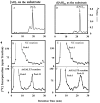
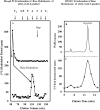


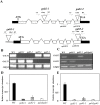

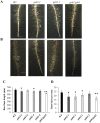
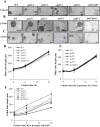
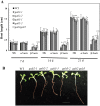
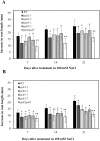
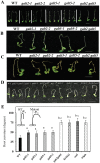

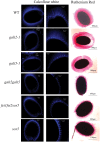

Similar articles
-
Functional characterization of hydroxyproline-O-galactosyltransferases for Arabidopsis arabinogalactan-protein synthesis.BMC Plant Biol. 2021 Dec 13;21(1):590. doi: 10.1186/s12870-021-03362-2. BMC Plant Biol. 2021. PMID: 34903166 Free PMC article.
-
CRISPR-Cas9 multiplex genome editing of the hydroxyproline-O-galactosyltransferase gene family alters arabinogalactan-protein glycosylation and function in Arabidopsis.BMC Plant Biol. 2021 Jan 6;21(1):16. doi: 10.1186/s12870-020-02791-9. BMC Plant Biol. 2021. PMID: 33407116 Free PMC article.
-
A small multigene hydroxyproline-O-galactosyltransferase family functions in arabinogalactan-protein glycosylation, growth and development in Arabidopsis.BMC Plant Biol. 2015 Dec 21;15:295. doi: 10.1186/s12870-015-0670-7. BMC Plant Biol. 2015. PMID: 26690932 Free PMC article.
-
Back to the future with the AGP-Ca2+ flux capacitor.Ann Bot. 2014 Oct;114(6):1069-85. doi: 10.1093/aob/mcu161. Epub 2014 Aug 19. Ann Bot. 2014. PMID: 25139429 Free PMC article. Review.
-
Arabinogalactan proteins in root and pollen-tube cells: distribution and functional aspects.Ann Bot. 2012 Jul;110(2):383-404. doi: 10.1093/aob/mcs143. Ann Bot. 2012. PMID: 22786747 Free PMC article. Review.
Cited by
-
New insights on the expression patterns of specific Arabinogalactan proteins in reproductive tissues of Arabidopsis thaliana.Front Plant Sci. 2022 Dec 2;13:1083098. doi: 10.3389/fpls.2022.1083098. eCollection 2022. Front Plant Sci. 2022. PMID: 36531351 Free PMC article.
-
JAGGER, an AGP essential for persistent synergid degeneration and polytubey block in Arabidopsis.Plant Signal Behav. 2016 Aug 2;11(8):e1209616. doi: 10.1080/15592324.2016.1209616. Plant Signal Behav. 2016. PMID: 27413888 Free PMC article.
-
Hydroxyproline-O-Galactosyltransferases Synthesizing Type II Arabinogalactans Are Essential for Male Gametophytic Development in Arabidopsis.Front Plant Sci. 2022 Jun 14;13:935413. doi: 10.3389/fpls.2022.935413. eCollection 2022. Front Plant Sci. 2022. PMID: 35774810 Free PMC article.
-
Golgi-localized exo-β1,3-galactosidases involved in cell expansion and root growth in Arabidopsis.J Biol Chem. 2020 Jul 31;295(31):10581-10592. doi: 10.1074/jbc.RA120.013878. Epub 2020 Jun 3. J Biol Chem. 2020. PMID: 32493777 Free PMC article.
-
The plant secretory pathway seen through the lens of the cell wall.Protoplasma. 2017 Jan;254(1):75-94. doi: 10.1007/s00709-016-0952-4. Epub 2016 Mar 18. Protoplasma. 2017. PMID: 26993347 Review.
References
-
- Carpita NC, Gibeaut DM (1993) Structural models of primary cell walls in flowering plants: consistency of molecular structure with the physical properties of the walls during growth. Plant J. 3: 1–30. - PubMed
-
- Albersheim P, Darvill A, Roberts K, Sederoff R, Staehelin A (2011) Plant Cell Walls. (New York: Garland Science, Taylor & Francis Group; ).
Publication types
MeSH terms
Substances
LinkOut - more resources
Full Text Sources
Other Literature Sources
Molecular Biology Databases
Research Materials

